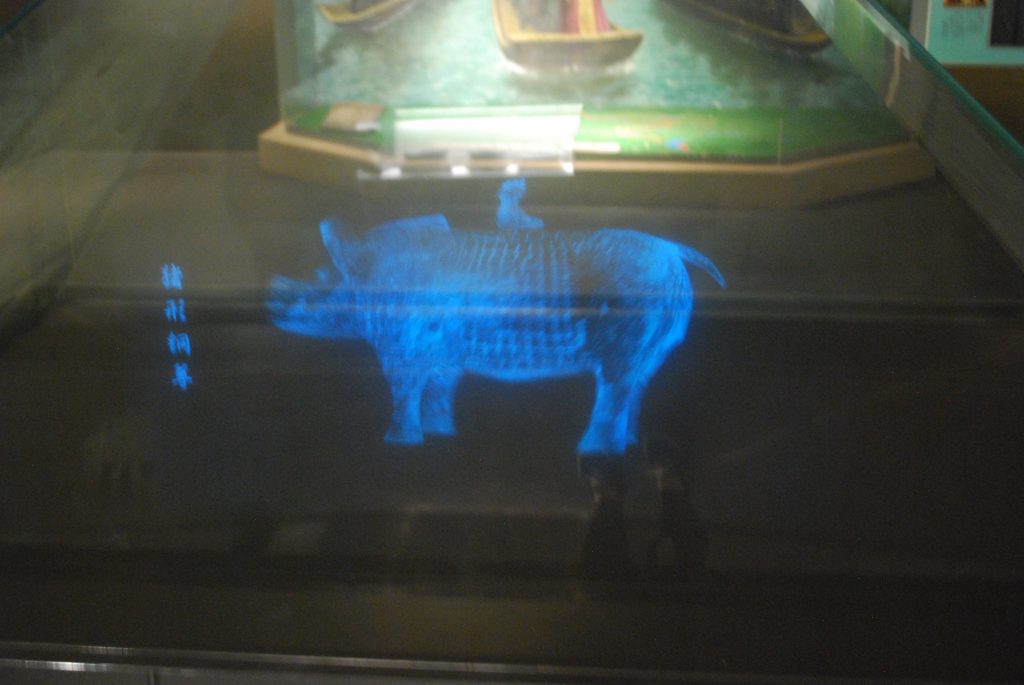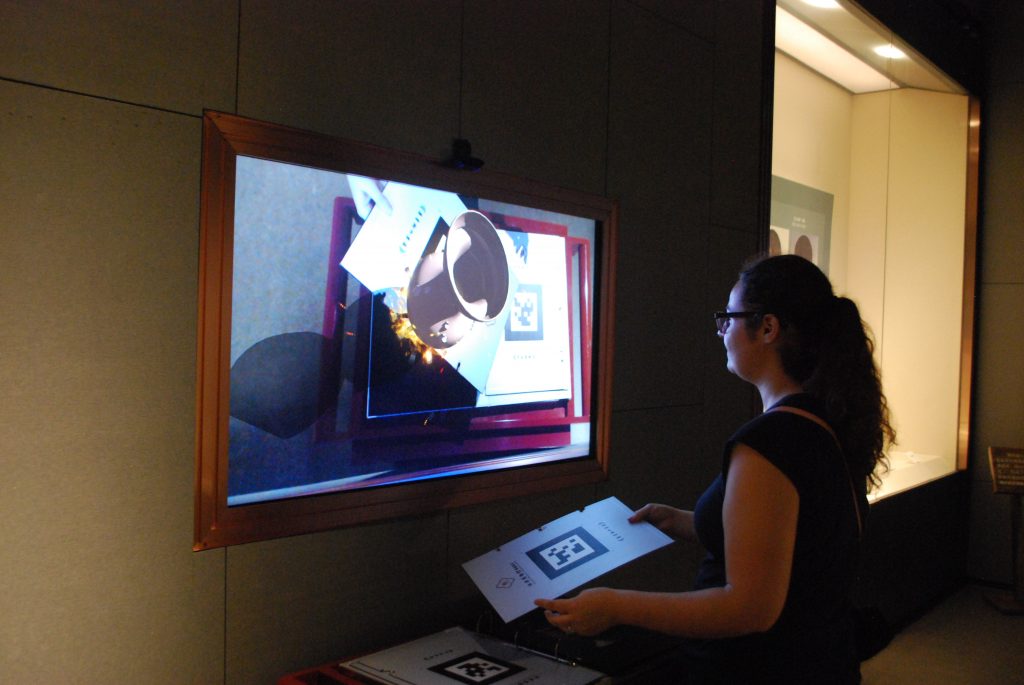Exploring Xiangtan Museums
In May, I took a trip to China to visit a friend who is working as an English teacher in the city of Xiangtan. While I was there, I wanted to visit as many museums as possible to see if there was a cultural difference. Of course, I could only visit museums that were near the city, but I felt that I left with some new inspirations and understandings of the way we run our museums in this country. My few key takeaways:

- Technology was everywhere!
From the moment we walked in the door at the Xiangtan museum, we were surrounded by technology, but it didn’t feel obtrusive. Instead, it was used to bring the visitor closer to the objects. The picture to the right shows the projection of a statue of a pig that was on display in one of the museum’s cases. The projection of the statue allows the visitor to see all sides of the object because there were designs that were hidden in the case display. This technique worked particularly well for vases or objects that need to be displayed in-the-round. In fact, they had a section dedicated exclusively to pottery with the technological ability using QR codes to bring up digital recreations of vases and pottery that matched some pottery shards that were on display (see picture below). Using technology to put the objects in a greater context was an excellent way to engage visitors, who otherwise might have passed over this section of fragmented pottery. - This history was so much older than I expected. While in the US, we have Native American art and artifacts, which I have seen dating back as far as 12,000 years old, it was a totally new experience to see some pieces in the Xiangtan museum that could be dated as far back as 300,000 years ago! This was not something that I had thought in-depth about prior to visiting. The artifacts that have survived this long are mostly fragments of stone tools, and the technology that the museum incorporated allowed the visitor to feel like they could actually interact with the object because you could pull it up on the touchscreen kiosks to look more closely at them.
- Less programming – the museums that we visited had less programming and more focus on history and the objects in the collection. In the United States, museums often attract people based on their programming, which is designed around their objects and the stories that the museum is trying to tell. None of the Xiangtan museums that I visited had programming to supplement their exhibits.
While I cannot speak for the culture of museums in other parts of the country, I had an excellent time visiting the ones in Xiangtan and seeing new ways to integrate technology into the experience. Even though I personally prefer our model of involving community programming, I found it compelling that the objects were such a focus in the museum experience.
